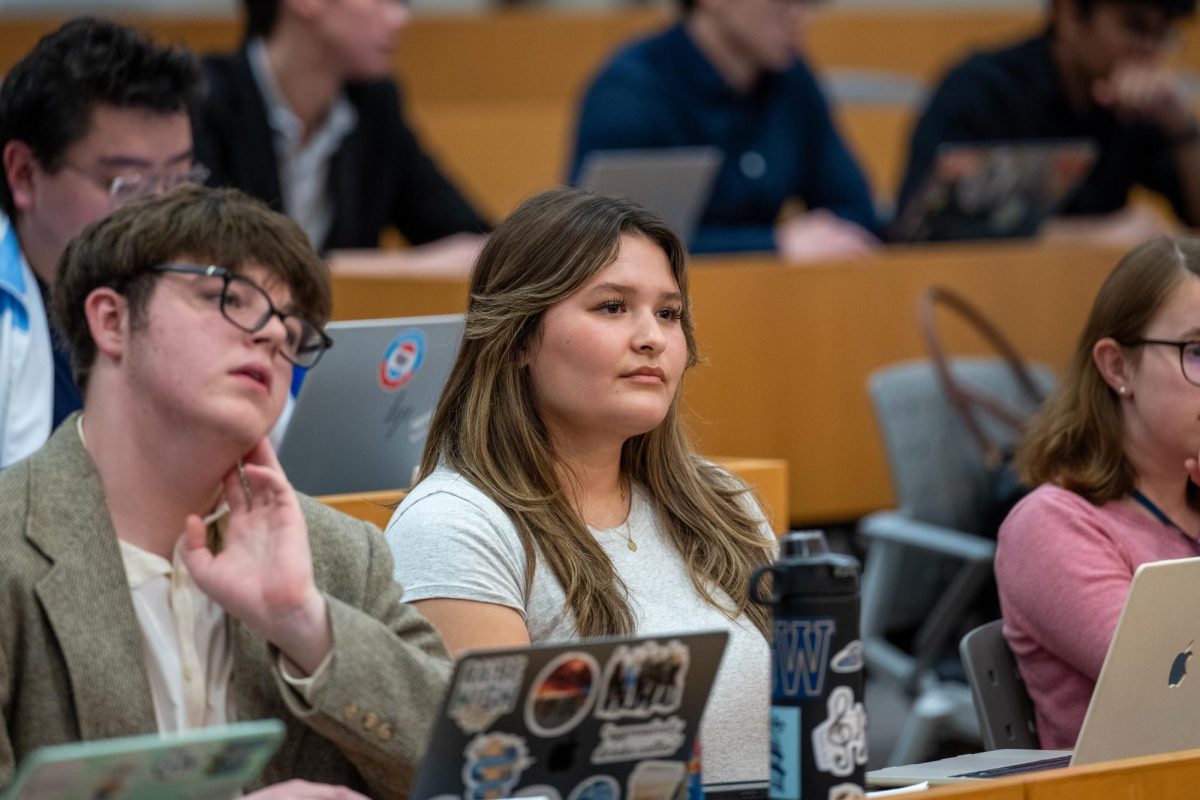A former NATO supreme allied commander critiqued military communication methods at an Elliott School lecture Wednesday, highlighting problems that arise when branches of the United States armed forces do not cooperate.
About 40 people, mostly professors and members of a naval sciences class, attended Admiral Harold W. Gehman Jr.’s lecture, which explained the difficulties of transforming the U.S. armed forces into a more cohesive body and addressed the realities of homeland security.
Gehman said the U.S. military, while effective in combat, is weak in its intelligence sectors and communication between branches. He said this could hinder current war efforts in Afghanistan.
“The U.S. military is good at blowing things up, but not very good at getting people and bringing them into courtrooms,” Gehman said. “We don’t gather evidence for prosecution.”
For the future, Gehman argued that the United States needs a more “swifter, more lethal, more agile military forces.” He said the military should continue a transformation begun before the Sept. 11 attacks to improve these qualities.
Gehman spent eight of his last 10 years in the “joint” world of the service where he attempted to improve the ability of the Army, Navy, Air Force and Marines to work together.
He said miscommunication is the main reason the United States lost more men to friendly fire than from enemies in the Gulf War, because forces of one wing of the military could not always identify forces from another wing.
“We kill our own people in very high numbers on the battlefield,” Gehman said. “Right now, we are still building radios that don’t talk to (other branches).”
Gehman said these communication issues seriously limit the effectiveness and implementation of the military’s advanced technology.
“We fire our weapons at one-third their designed range because we do not always know who we are shooting at,” Gehman said.
Gehman, previously the Commander in Chief of the Joint Forces Command, said the JFC is looking to bridge the communication gap between the services. The Command has created a program called Joint Vision 2020, which shoots for a unified military by 2020.
“We are on the road to becoming joint,” Gehman said. “But it will not happen by 2020.”
Gehman rates the U.S. military as doing “fair” in its transformation process. He said there are no strict enforcement methods for the JFC to ensure compliance with military cooperation policies.
“I would find a way to put teeth into the joint requirements process,” Gehman said. “There is no way for the JFC to effectively force cooperation.”
Gehman concluded by discussing the difficulties of homeland security in the current era of globalization. The easy flow of people, information and mail creates a serious security threat, but it is dramatically important to the economy of the 21st century.
“We need to figure out how to provide security while keeping the good parts of globalization but isolating the bad parts,” Gehman said.







